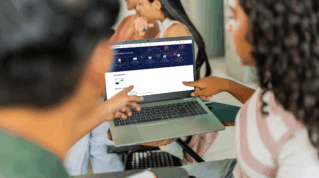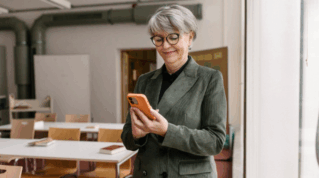Now more than ever, the digital divide is shaping who has access and who is left behind. For learners facing exclusion and those with additional needs, lack of digital access doesn’t just limit possibilities; it compounds existing inequalities. The government’s recent £45 million investment demonstrates the urgency of this issue.
But while the provision of devices is often framed around access, what’s emerged clearly from our experience is that access alone is not enough. To really benefit, learners need well-managed, safe devices and the right support to use them confidently.
Safety first
With over 10,000 permanent exclusions last academic year, the challenge is clear: we need to speed up efforts to make new technologies accessible to everyone. Real impact begins when we start with the learner in mind. What do they need to feel safe, seen and supported?
This month, new requirements under the online safety act came into effect, requiring websites and platforms to enforce age verification and restrictions more strictly. Though a positive step, more must be done to truly protect young people online.
The challenge we face today is stark. On one end, the internet presents growing dangers for children, from grooming and radicalisation to the misuse of AI. Set against this is an equally urgent need to equip young people with the most advanced, future-ready digital experiences that will help them navigate the user interfaces of tomorrow with confidence and skill.
These goals can feel fundamentally opposed, like walking a tightrope between innovation and protection. It’s our responsibility not just to react, but to proactively identify and guard against these threats. With clear vision, strong partnerships, and the right tools, we can achieve that balance.
Education built in
Nearly one-third of UK school-aged children do not have uninterrupted access to a suitable device at home for online learning or school work. This figure hasn’t changed since last year.
Without reliable access to suitable devices, many learners are missing out on vital learning opportunities. To bridge this gap meaningfully, we must move beyond handing out devices and hoping for the best.
Instead, we must bring education and tech leaders together to co-design digital experiences that put inclusion first. Devices must be thoughtfully managed from the outse,t with safeguarding built in, not bolted on.
This includes using device management systems to control app installations, apply content filters and enable safe browsing features that are especially critical for students learning outside of mainstream settings.
Putting children at the centre
Even with a device in hand, online experiences can still hinder learning, especially as new digital trends emerge that are poorly understood and lack proper guidance or safeguards.
The rise of overstimulating ‘brain rot’, for example, underscores the urgent need for thoughtfully-designed digital devices that minimise harm through intentional features like simplified interfaces, consistent layouts, and age-appropriate content filters.
This approach not only reduces distractions but also creates a purposeful and calm digital space that sends a clear message to young people: this space was made with you in mind.
The need is clear. Let’s invest in thoughtfully managed and safe digital tools that extend not just access, but a sense of belonging to those who need it most.









Your thoughts